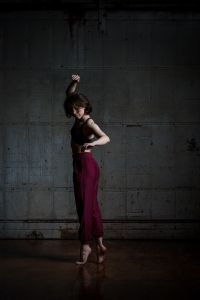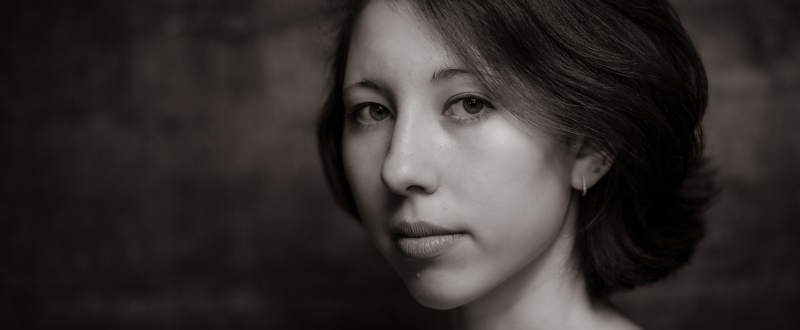Every summer I write to blogger and mover Emmaly Wiederholt to answer her question “where are you with dance right now?” Her site Stance on Dance extends conversations around dance outside of the studio. In my 2016 response to Emmaly this year I wrote:
“I am currently a student at Ohio State University pursuing a BFA in dance. In the fall, I will begin my third of four years.
I believe I will look back at this past year as a year marked with change and growth. There were many ‘up’ moments filled with excitement from new knowledge and self-discoveries, just as there were many ‘down’ moments filled with stress and self-doubt, but I am thankful for the journey that has led me to where I stand now. I more than ever trust my instincts, believe I have a good head on my shoulders, and see all the tools I need to make informed decisions.
Two important decisions I made this year were that I will have faith in following my instincts to do nothing more than what I think is right for me in the moment, and that I want to perform professionally. Upon entering Ohio State’s college dance program, I wanted to see what the field had to offer. I learned there are many different outlets in which to use dance knowledge, and after getting the taste of quite a few, I can say I find all aspects as equally important cogs in the working clock of the field, but my heart lies in performing. I love the choreographic process. I love the art of tapping into another’s mind to help coach movement art into fruition.
And although I have decided I want to perform, other aspects of dance remain just as important to me. This year I learned about movement analysis, a new passion of mine I did not previously know existed. I’m super into Rudolf Laban. He revolutionized modern dance to become an abstract expressionist art form. While I appreciate the rich history and art of Labanotation, my interests in movement analysis at the moment lie more with Motif and LMA principles, which I believe allow for a more complex, deeper understanding of movement to develop. Some things I am thinking about now are how efforts and intentions as explained by Laban enhance a performer’s understanding of work. Over the course of my years as a dancer, I have had some great teachers, and this year was no exception. What I got in excess this year was a group of dance scholars—I say this to encompass both dance academic and movement professors—with advice that significantly changed my outlook on dance and the greater role it plays as a part of the human experience. One lesson that shaped me came from Dr. Hannah Kosstrin, my 20-21st century concert dance history teacher, who said, “Our bodies are a living history of everything we have danced before.” In other words, our bodies are moving archives of every past dance technique and teacher we have trained with, every choreographic process and performance, every injury or trauma, every movement interaction we have made with the world surrounding us. Bodies are smarter than the mind realizes, and it carries years (for me it is now 20 years) worth of movement information.
Over the course of my years as a dancer, I have had some great teachers, and this year was no exception. What I got in excess this year was a group of dance scholars—I say this to encompass both dance academic and movement professors—with advice that significantly changed my outlook on dance and the greater role it plays as a part of the human experience. One lesson that shaped me came from Dr. Hannah Kosstrin, my 20-21st century concert dance history teacher, who said, “Our bodies are a living history of everything we have danced before.” In other words, our bodies are moving archives of every past dance technique and teacher we have trained with, every choreographic process and performance, every injury or trauma, every movement interaction we have made with the world surrounding us. Bodies are smarter than the mind realizes, and it carries years (for me it is now 20 years) worth of movement information.
Understanding this allowed me to better celebrate the movement journey that has brought me to my current place. To hear that essentially every individual body is a different grouping of eclectic physical lessons was important for my greater appreciation of where I am at. I can be nothing more than what I am currently. In the past, I found myself somewhat ashamed of my not-so-traditional, very jumbled and eclectic route towards contemporary concert dance. I had believed that not being raised a “bunhead” left me lacking, and that I would need to play a constant game of catch-up to those with backgrounds in solely codified techniques. But I am not lacking. My experience in tap, Irish dance, cross-country running and jazz have left me with a different set of movement histories to inform me daily.
I also got to be a part of some historic moments this past year. OSU faculty member Bebe Miller will be retiring after fall semester 2016, and I was lucky to have been a student in her final contemporary technique course this past spring. I will always remember our final class together, where we played music to commemorate the recent loss of Prince and danced. As we pounded on the floor, hooted and hollered, and clapped for our amazing teacher to signify the end of our final class, she said to us, “You’ve just got to do it, figure it out, and pass it on.” From Bebe, I learned loads. She, with lessons paralleling those from my ballet professor Karen Eliot, helped me to understand that ballet and contemporary dance have the same alignment challenges. Bebe got me to consider the ephemeral nature of dance and movement. And through her advice, I now turn to watching Trisha Brown’s Water Motor when I need a splash of dance inspiration.
Some of my greatest moments of growth, both the growth that is physically marked as well as the mental growth that occurs when you once again realize that you know basically nothing, came from studying under Eddie Taketa. As a new faculty member at OSU after his recent retirement from Doug Varone and Dancers, I had the pleasure of taking his contemporary technique and participating in a new work he created. One of my most memorable moments in Eddie’s technique class came when he demonstrated a complicated combination quickly, and the students including myself stood there with troubled looks, thinking too hard about what we just saw and how we would possibly learn it. Eddie paused and said to us relax, “Your body knows technique. You’ve been training in dance for years. You no longer have to think about the steps. You can just trust that your body knows them.” This absolutely connects to my Dr. Kosstrin lesson. The body is way smarter than we realize and I have an entire history of learning movement to inform my dancing. So with this advice from Eddie, I learned to relax and ride the wave of information that my body soaks up when the mind is at ease. Another Eddie lesson states that you essentially can plan nothing; you can only allow yourself to remain open for experience to happen to you. For my Type A, organized and controlling personality, this has been a hard pill to swallow, but I cannot deny the truth in that statement. Living in the past or the future is nothing compared to existing in the moment, and if I can’t plan future experience, then why not enjoy what’s going on in the present?
Eddie Taketa brought the Doug Varone and Dancers Summer Workshop to my attention, so a couple of my classmates and I went to Skidmore College this summer to work with the company. I just recently got home from the workshop, and I am still taking time to process all of the aspects of this amazing experience. What I can say is that I honed more movement skills, and my body got the chance to soak up and archive more teacher histories. But maybe most importantly, I was reminded of all the lessons I had learned over the past school year in patience, living in the current moment, trust, celebrating difference, and letting go. I was reminded that the smart mover is sought out and appreciated.
My summer is not yet over; my dance journey has just begun. Rounding out my summer of dance, on July 5th I began the Hubbard Street Summer Intensive in Chicago. I will follow up that with the week-long Gaga workshop in NYC, then return to school early to work with MFA candidate Josh Manculich on his upcoming thesis work. Moving forward into the coming school year, I remain aware that dance is the art of trying to be perfect in a world where there is no such thing. There will always be room for growth, and I can’t wait to experience that journey.”
I like to refer back to my page on Stance on Dance. It has a history of dance/life check-ins starting in 2013.

